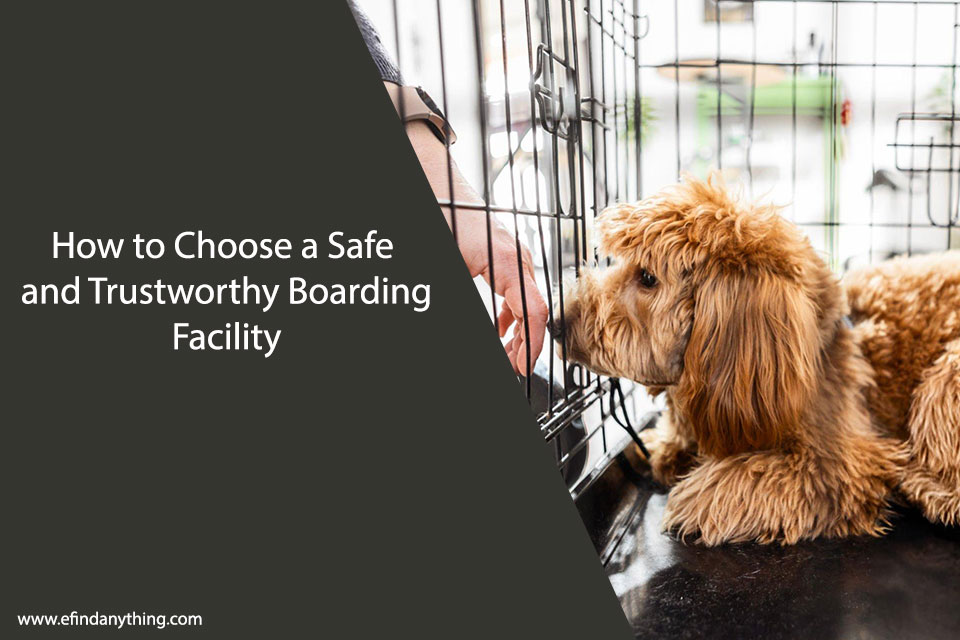
The challenge of choosing appropriate care for your pet during travel times creates stress for pet owners. Ensuring reliable care for your four-legged companion requires you to make a choice between pet boarding and pet sitting.
The two pet care options present distinct differences according to several factors.
- Price points
- Personalized care
- Environment
- Convenience
This article explains all essential information to help you choose the perfect option for your pet.
What you’ll discover:
- Pet Boarding vs. Pet Sitting: Key Differences
- When Pet Boarding Makes More Sense
- When Pet Sitting Is The Better Choice
- Cost Comparison: What’s More Budget-Friendly?
- Making The Final Decision For Your Pet
Pet Boarding vs. Pet Sitting: Key Differences
Both pet boarding and pet sitting provide the same service of pet care during your absence but function in different ways.
Pet boarding requires bringing your pet into a facility where they will remain until your return. Consider pet boarding as a hotel specifically designed for animals. Modern boarding facilities like Wag Hotels offer amenities ranging from basic kennels to luxury suites with webcams, play areas, and specialized care options.
Pet boarding has undergone significant development with more than 20,000 pet care centers operating in the United States and 9,000 boarding kennels throughout the United States and Canada. These facilities employ professional staff who can address all pet requirements including medication administration and behavioral management.
Pet sitting requires an individual to visit your residence for the purpose of taking care of your pet. Pet sitting can be performed by either a professional sitter or someone from your circle of friends and family. Depending on your chosen arrangement, the sitter will either visit your home several times daily or remain in your home throughout their visit.
Traveling pet owners leave their pets at home 63% of the time but only 35% use professional boarding services or pet sitting. An unexpected 45% of pet owners depend on friends and neighbors for pet care.
This summary highlights the main differences between the two options:
- The boarding condition separates pets from their homes while sitting keeps them in their familiar environment.
- Boarding facilities allow pets to interact with others while pet sitting delivers personalized attention.
- When you board your pet, their routine shifts but pet sitting allows them to keep their normal routine.
- Boarding provides continuous staff supervision while sitting generally includes scheduled visits unless overnight care is needed
When Pet Boarding Makes More Sense
The needs of pets and their circumstances differ from one another. Some pet owners find boarding facilities to be the superior choice.
Consider pet boarding when:
- Your pet thrives in social situations and gets along well with other animals. Certain pets perform better in the interactive setting provided by boarding facilities. Dogs who love the dog park environment and cats who enjoy observing their feline friends may find boarding facilities entertaining.
- You’re traveling for an extended period. Finding a sitter who can stay with your pet for weeks or make multiple daily visits poses a challenge.
- Your pet has special medical needs. Most boarding facilities maintain veterinary staff available for emergencies or provide necessary medical treatments to pets. In over 70% of U.S. households where pets live, specialized care becomes necessary because most friends and family members lack the proper skills to provide such care.
- You lack dependable family members or friends in your immediate vicinity. Professional boarding provides a solution for your pet when your support network isn’t dependable and someone’s plans change suddenly.
When Pet Sitting Is The Better Choice
The primary goal for numerous pet owners is maintaining their pet in a known environment.
Pet sitting might be better when:
- Your pet displays anxiety or distress around other animals or shows signs of aging. New surroundings along with unfamiliar animals can lead to stress among certain pets. Sensitive pets experience the highest level of comfort in their own homes.
- You want to maintain your pet’s routine. Pets thrive on consistency. A pet sitter can follow your pet’s usual feeding, walking, and playtime schedule.
- You need other home services. While you’re away pet sitters provide home security by bringing mail and watering plants to create an occupied appearance.
- You have multiple pets. Having a sitter visit your residence typically presents a cheaper option compared to boarding multiple animals and avoids disruption to their environment.
Cost Comparison: What’s More Budget-Friendly?
Cost is always a factor in decision-making. Now we’ll examine the potential costs associated with each option.
Pet Boarding Costs:
- Basic kennel: $25-$45 per night
- Luxury boarding: $50-$85 per night
- Additional services (playtime, treats, etc. ): $5-$20 each
Industry statistics show boarding services have prices ranging between $25 and $85 per night based on the services offered. The expenses for pet care services can become extremely high during extended trips.
Pet Sitting Costs:
- Drop-in visits (30 minutes): $15-$25 per visit
- Overnight stays: $50-$85 per night
The US pet daycare market generates approximately $3.7 billion every year which demonstrates pet owners’ readiness to spend on superior pet care services.
Cost-saving factors to consider:
- Pet owners receive discounts when they opt for sitting services for multiple pets at once.
- The duration of your pet’s stay can lead to reduced rates at many facilities.
- Holiday periods lead to higher costs for both pet boarding and sitting services.
Making The Final Decision For Your Pet
The decision between boarding and sitting should reflect the needs of your particular pet. This straightforward framework will guide you through the decision-making process.
1. Assess your pet’s personality:
- How do they react to new environments?
- Do they enjoy other animals?
- Have they shown anxiety when you’re away?
2. Consider your specific needs:
- How long will you be gone?
- Is there a requirement for someone to monitor your house while you’re away?
- Does your pet require any particular attention or medical treatments?
3. Research your options:
- Visit potential boarding facilities
- Interview potential pet sitters
- Ask for references or read reviews
4. Do a trial run:
- During your vacation planning stage, test the waters by scheduling a brief overnight boarding experience.
- Observe your pet’s reaction and modify your plans based on their behavior
The pet services industry holds significant size with more than 20,000 pet care facilities operating throughout the United States. Choose the best possible care options and avoid settling for substandard services.
Making The Right Choice
Pet owners should consider both boarding and sitting services when planning travel arrangements for their pets. Selecting between pet boarding and pet sitting requires consideration of your pet’s personality as well as the details of your situation and how comfortable you feel about each choice.
Pet owners frequently combine services by choosing boarding centers for extended trips while hiring pet sitters for short weekend outings. Since 90.5 million U.S. families keep pets the market has expanded to offer a wide range of services that address pet owners’ diverse needs.
It’s essential to ensure your pet experiences safety and care during your absence. Through your deliberate decision between a social boarding environment or keeping your pet at home you show the depth of your love for your furry family member.
Have you had any previous experience with pet boarding or sitting services? What worked best for your pet? Different pets require different boarding solutions based on their unique personalities.











